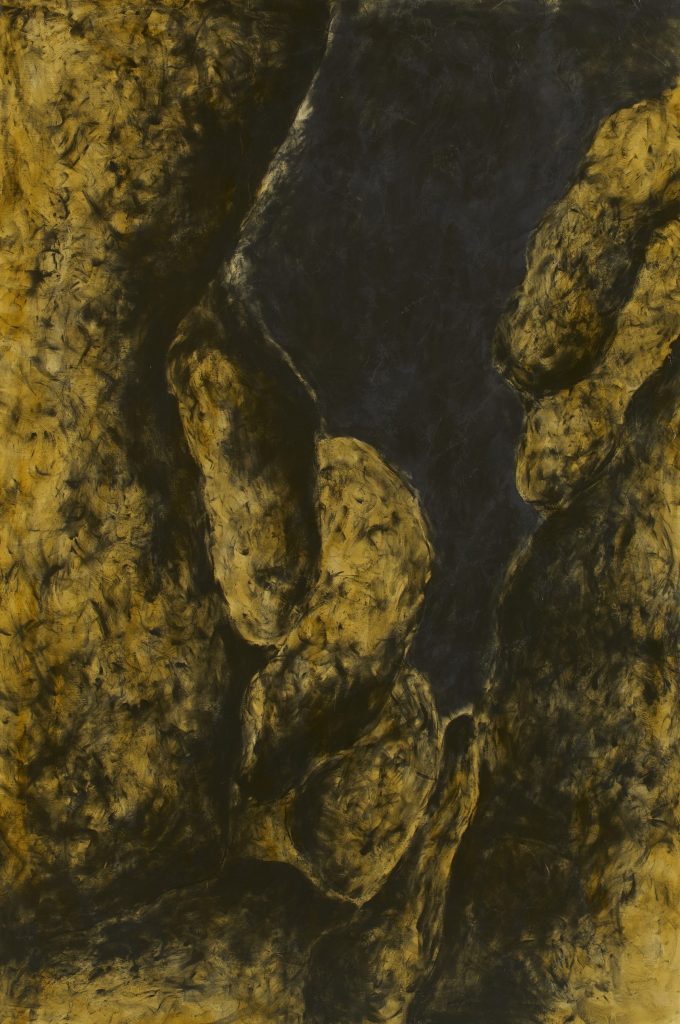Watch, Read, Listen
Recent Additions to the Collection MOMAT Collection Newsletter of the National Museum of Modern Art, Tokyo Yoshida Katsuro, Touch “Body-47” , 1989
Back
Touch “Body-47”
1989
Powdered graphite and oil on canvas
145.0 × 112.0cm
Purchased FY2018
Yoshida Katsuro (1943–1999) produced a diverse body of work, originally making minimal modifications to basic materials such as wood, iron, and light bulbs and emerging as a central figure in the movement known as Mono-ha (the “School of Things”) in the late 1960s and early 1970s. In the 1970s he began making prints, using plates derived from photographs.
Yoshida won the grand prize at the 1st International Biennial Exhibition of Prints in Seoul (1970, National Museum of Korea). In the 1980s he began painting, and his most noted work in this medium is the Touch series, to which Touch “Body-47” belongs.
Black dots and lines writhe across a canvas primed in light ocher. The black material is graphite powder, applied to the surface with the fingers rather than a brush: as the title implies, the marks on the painting are made by “touch.” Even areas that appear solid black are, on closer examination, evidently made with countless overlapping fingermarks.
Let us consider the implications of the title Touch for a moment. We can say that during his years as a key figure in the Mono-ha movement, Yoshida concealed signs of “hand-crafting” by combining readymade materials such as wood, iron, and light bulbs. The same can be said of his prints of the 1970s. Generally, printmaking is thought of as making multiple copies of an image crafted by the artist’s hand, such as a woodcut, but by printing with plates derived from photographs, he did his utmost to eliminate any signs of “hand-crafting” such as carving or drawing.
The Touch series, created in the later years of the artist’s life, did the opposite. He grappled directly with the canvas, pressing and rubbing his graphite-covered fingers against it again and again. This represented a breakthrough that differed radically from the traditional techniques of painting. As an artist who produced bodies of work in completely different media, all of them significant, during different phases of his career – sculpture during the early years, prints mid-career, and painting in his later years – Yoshida can be seen as a singular figure in postwar Japanese art.
To return to this particular work: the Touch series presents different types of spaces on canvases of various shapes, the largest of which have widths of two meters or more. Touch “Body-47” is a relatively small work. The trails of graphite running over the surface, with the canvas beneath showing through in places, generate an uneasy atmosphere. The work contains multiple forms of varying sizes, and when viewed overall the image resembles an outstretched hand. Or it may be seen as a part of the body, or perhaps as a canyon. The indefinable image can be said to emerge solely from the soft, dark powdered graphite material. Its richly expressive quality offers one answer to the recurring question of why painting is still necessary.
(Gendai no me, Newsletter of The National Museum of Modern Art, Tokyo No. 635)
Release date :


